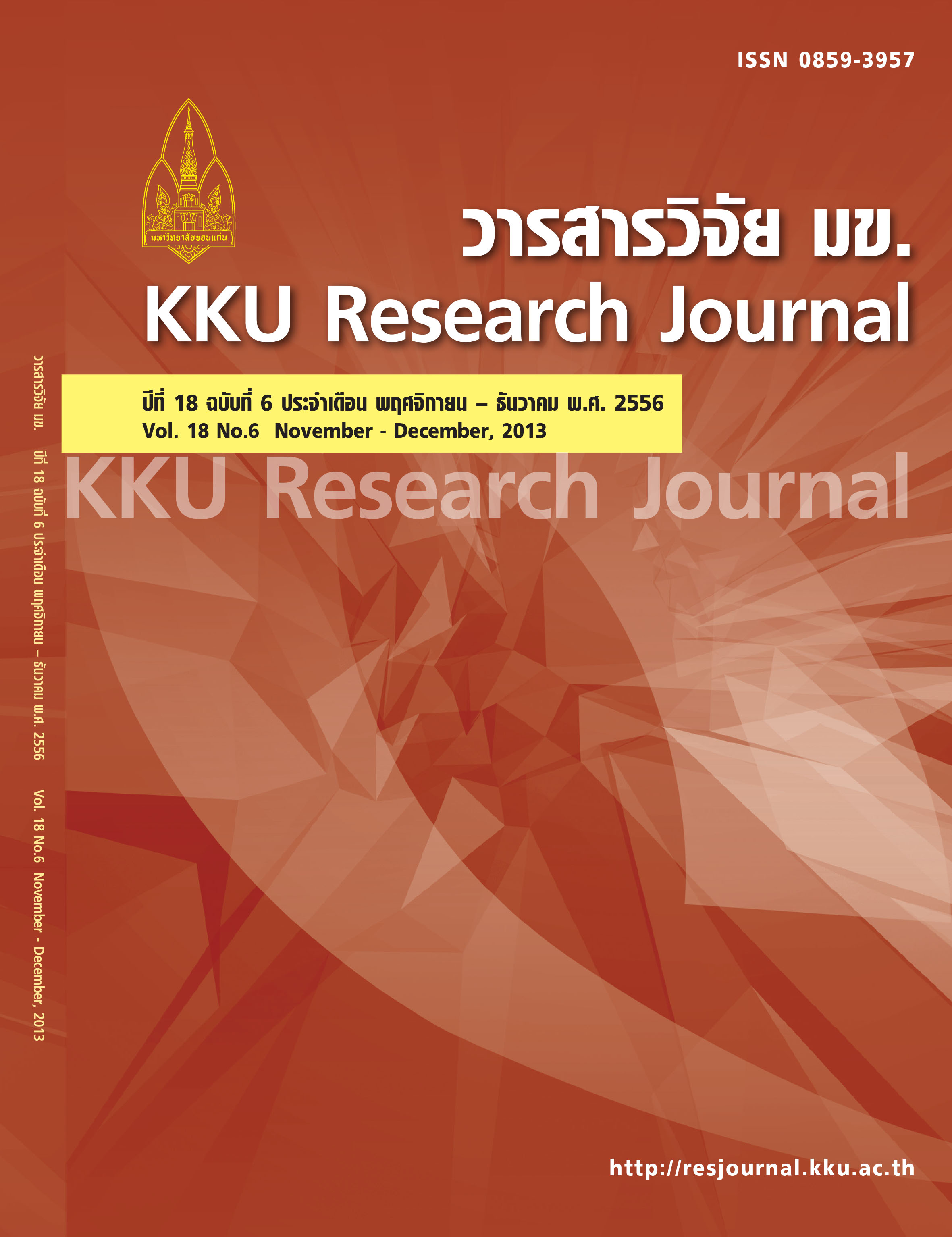Evaluation on optimum dietary n-3/n-6 fatty acids ratio for growth of asian sea bass, lates calcarifer (Bloch, 1790) using the commercially practical diet
Main Article Content
Abstract
Study on optimum dietary n-3/n-6 fatty acids ratio for growth of Asian sea bass, Lates calcariferwas conducted. Fish with an initial weight of 2.90 g, were fed with diets containing 43% crude protein and 15% crude lipid. There were six test diets containing n-3/n-6 fatty acids ratio at 0.3, 0.6, 0.9, 1.2, 1.5 and 1.8 (D1-D6), respectively. These resulted in dietary docosahexaenoic acid (DHA) were 0.82, 0.95, 1.02, 1.11, 1.17, and 1.24%, respectively. Three fish groups were fed each diet to an apparent satiation twice a day for 90 days. The results showed that non-significant differences of survival rate, feed intake, feed conversion ratio, protein retention and nitrogen loading were observed among fish fed all the test diets (P>0.05). However, growth rate of fish fed D6 significantly lowered than those of fish fed D1-D4 (P<0.05). Non-significant differences of flesh ratio and hepato-somatic index were observed among fish fed all the test diets (P>0.05), but viscero-somatic index of fish fed D1 significantly lowered than those of fish fed the other diets (P<0.01). The significant higher condition factors were also observed for fish fed D1 and D2 compared with those of fish fed the other diets (P>0.01). The whole body contents of protein, lipid, and ash of fish fed all the test diets were similar. The whole body contents of both saturated and n-3 fatty acids tended to increase with increases of dietary n-3/n-6 fatty acids ratio and DHA, but n-6 fatty acids decreased.
Article Details
How to Cite
Plaipetch, P. (2017). Evaluation on optimum dietary n-3/n-6 fatty acids ratio for growth of asian sea bass, lates calcarifer (Bloch, 1790) using the commercially practical diet. Asia-Pacific Journal of Science and Technology, 19(1), 119–130. retrieved from https://so01.tci-thaijo.org/index.php/APST/article/view/82910
Section
Research Articles


